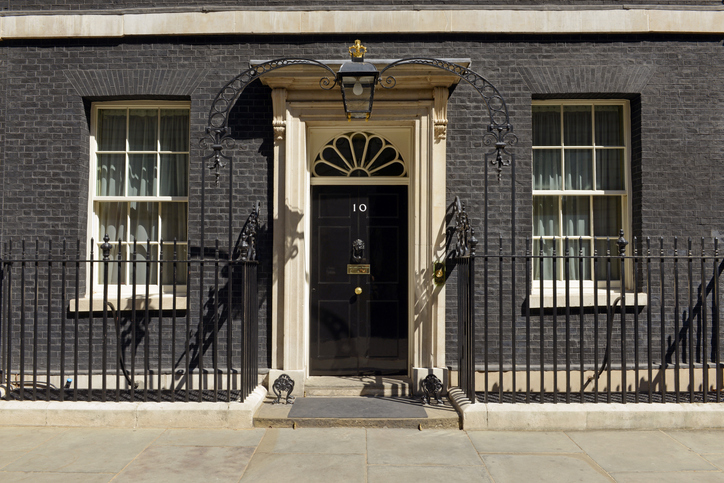Setting up a high street business is a daunting proposition in today’s era. The UK’s high streets suffered 5,855 store closures in 2017, more than in any year since 2010, according to analysis of the UK’s top 500 towns compiled by the Local Data Company for PricewaterhouseCoopers.
A net 1,700 chain shops closed their doors in 2017, according to the analysis, with an average of 11 stores a day opening, while 16 a day closed.
It makes for sobering reading for those planning to succeed with a brick and mortar shop. But that is just what James Dunworth did, growing E-cigarette Direct to a £7 million turnover business with 90 employees and a chain of 19 shops. In this piece, he reveals how he was able to make it work in such brutal times.
What is the business, when was it started and what were you doing beforehand?
Back in 2008 I was working as a teacher in Qatar, teaching English to government employees. I had been abroad for nine of the past 11 years (working in Thailand, Indonesia and the Middle East), had a young family and was ready to return to the UK!
The business was started in August 2008. I initially stayed in Qatar, working on the website and the blog in my spare time, while my mother handled customer service and admin. We had no idea that ten years later we would have 90 employees, a £7 million pound turnover and a chain of 19 shops.
How did your first shop come about?
Our first shop was in Neath, a small market town in South Wales. We chose it because the demographics were right and because it was cheap; there was some hesitation on one of the director’s parts and we needed to prove the model before we invested in a more substantial shop.
We walked around the town at different times of day, and saw that there was car parking close by and easy access for people walking through M&S and to the market. The rent cost just £8,000 a year and rates were around £4,000, and we spent a few hundred pounds on fitting the shop out, doing all the work ourselves.
We weren’t confident of success, and the shop looked terrible – nothing like our flagships stores today. We even left the mirrors from the hairdressers in and you could see the chairs and sinks at the back of the shop – but the shop was in profit in just weeks. That gave us the confidence to take on a more substantial lease in the centre of Swansea.
How should a small retailer find the right premises for a brick and mortar shop?
We identified broad geographical areas in which to expand. It’s important for us to have shops in reach of each other. In an industry where shops are often single manned, it’s essential that staff can move from one shop to another in order to cover absences.
Within these areas we’ve run demographic analyses. Based on experience, we know we need towns over a certain size with smoking rates (typically over 15 per cent, although the higher the better). We also look at the nature of the town. Some towns appear to have sufficient population but in practice most of the residents will do their shopping at an out-of-town mall or in a nearby city. Other towns act as a destination, or may experience surges in footfall at certain times of the year. For example, our store in Western-super-mare performs particularly well in the summer because of holiday visitors.
“Some towns appear to have sufficient population but in practice most of the residents will do their shopping at an out-of-town mall or in a nearby city”
We’ve found we perform well in poorer areas. Smoking is higher in poorer demographics, and many smokers in the A and B demographics are already used to ordering vape supplies online. We’ve also analysed top performing stores to find out what similar shops they are located too. We’ve found shops perform well when they are close to discount shops, busy coffee shops, fast food restaurants, betting shops and all day pubs. However, in the current retail environment we also look at the financial stability of the bigger chains to determine whether they are still likely to be around in year or so.
What other research do high street businesses need to do?
It’s important to look at restrictions placed on the shop or its location. For example, we like to have the ability to flex opening hours to respond to local footfall trends, which might mean opening before 9.00 in the morning and or after 5.00 in the evening – not all locations allow this.
We use resources like Business Improvement Districts websites to get an initial idea of footfall, but that doesn’t replace the need for multiple site visits at different times of the day and the week. Footfall can be deceptive. A street can have high footfall but it can be on the wrong side of the street. It might be more of a thoroughfare than a shopping destination, so it’s important to identify whether passers by are looking at the shops or have their heads down as they travel to another part of the town. Finally, we also look at turn rates – at what point do people stop and turn round. Sometimes you can have a street which can be busy on one stretch, but where the traffic turns off before reaching your target location.
What about rent negotiation?
We work closely with an agent who, working within parameters we have set, monitors shops in our target locations, and handles negotiations for us. When discussing terms with the agent it was important to avoid a fee structure based on commission in order to avoid a perverse incentive for higher rents. This agent has proved very effective both at negotiating new terms and reducing rents going forward during renewals, and we believe the fees we pay have been more than covered by reduced rents. At times, via the agent, we’ll work with a single landlord on several locations. One particular landlord is keen to buy shops where there is the potential for a second floor flat, and we’ll work with him to identify locations which are mutually beneficial.
What do you look for in a new shop?
We look for shops with the potential for further development. It can be a mistake to take too small a shop as it can limit the opportunity for developing the shop further in the future. If a shop is showing a lot of potential, we’ll look at putting additional investment into that store to improve the branding, look and feel of the store.
We’ve actually benefited from dropping rents and business rates in some locations. For example, in Cardiff we picked up a shop for £65,000 per annum which had previously been rented from over £100,000, and where rates had dropped by a similar proportion. This trends seems to be picking up and I’ve seen some incredibly cheap shops appearing for rent recently. Overall business rates changes have been broadly neutral for us, with drops in rates offsetting increases elsewhere.
Rents vary hugely, from as little as £10,000 a year to as much as £65,000, with the average being around £40,000. Broadly speaking, we’ve found that the more expensive shops punch above their weight, with their superior locations providing a better return on investment than the cheaper shops.
In practice, what are the key differences between a physical and online shop?
There are a few key differences between online and a physical presence. In an online store you have a lot more control. For example, we’re keen to maintain a consistent brand and tone and that’s a lot easier when your brand manager is sitting in the office next to you! It’s harder when you have far flung stores which as a director you might only visit once or twice a year.
It’s also easier to have a large product range online. We can bring in a small range of products for the website without taking too much of a financial hit, but bringing in a new product range for all of our shops involves an investment of tens of thousands.
“Rents vary hugely, from as little as £10,000 a month to as much as £65,000”
Scalability is another huge difference. Your website can reach anyone in the world; with a shop you are a limited to the people who walk past you or who are drawn in by local SEO. But on the other side local subjects are not subject to the vagaries of SEO. A change in Google’s algorithm can send your website plummeting in Google’s search results, but a shop’s location remains unchanged.
In our own particular industry, there’s another huge advantage to having a shop. We’re selling a product which is highly tactile, sometimes complicated and where the flavour and feel of the product is important. There’s a huge advantage in having an expert in the shop who can explain the product, and for the customer to be able to pick up a product and try it out before buying. This is particularly the case for our e-liquid – reading a product description on a website doesn’t replace being able to pick out an e-liquid and actually trying it before you buy it.







